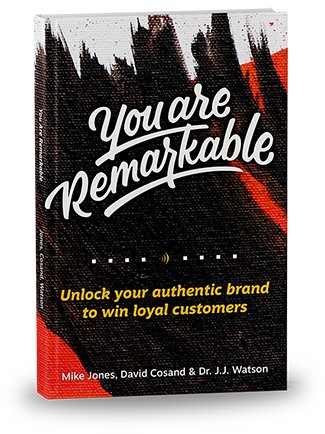When you identify your enemy, you give everyone inside and outside your company a shorthand by which to understand and describe who you are, your values and what you probably do.
Think about it:
- Your enemy: termites. Your organization: pest control
- Your enemy: the confusion of the tax code. Your organization: tax prep.
- Your enemy: unscrupulous contracts. Your organization: law firm.
- Your enemy: predatory lending. Your organization: credit union.
Most brands lack distinction and conviction because they don’t want to call out an enemy. After all, that’s mean, right? “We don’t have any enemies.” That may be a popular way to talk if you’re a politician or the CEO of a large company, but it’s not fun.
The truth is, most brands have an enemy, but they’re not willing to admit it. And although enemies should never define us (unless we’re evil, good is always what defines us), enemies can provide a useful illustration.
Identifying your enemy is a little trick I learned from Luke Sullivan when I was a copywriter. It’s like cheating, because an enemy gives you something to go after. It paints the target for you and your team. But most importantly, it gives you common ground with your customers.
An enemy tests your mission. It tests the theory about what you stand for.
An enemy is a useful contrast, allowing you to test your strengths and weaknesses, while exposing the enemy for everyone to see.
And it tests your values, showing everyone in your organization your inconsistencies so that you can proactively deal with them. After all, you can’t consistently stand against gambling, when there’s a one-armed bandit (slot machine) installed in your break room.
Do you know what you stand for in hard, street-level terms? Maybe not now. But when you meet your enemy on the field of battle, your senses sharpen and your wits become keen. You’re at your best.
Remember: Your enemy is your customer’s enemy
Your enemy has to be someone you share with your customers. Really it’s your customer’s enemy. If you’re the hero of the story it’s your enemy, but if you’re the guide then it’s the customer’s enemy you’re looking for.
You’re standing there, shoulder to shoulder, with your client facing this enemy together. If this is part of your brand story, with your enemy as their enemy, then you’re likely to be speaking exactly the same language as your customer, understanding his or her business in terms of this enemy. This puts you on the same side as your customer, and it clarifies your brand story.
Your enemy can be a person, but more likely, with a company, it’s going to be an idea or inanimate object.
If you want to build out your enemy more, you could describe the things that it does or the effects of your enemy. This will help you to understand what you’re fighting a little better, and allow you to attack it in a new way that maybe your competition isn’t quite doing.
So how do you identify an enemy?
1: Ask why you exist. Write it down. There’s nothing that develops your understanding like writing something down and committing.
- Would your customers agree with you or disagree? If it’s not a pain point for your customers, keep looking. But don’t be confused; just because they don’t realize it yet doesn’t mean it’s not a pain point. Just make sure you’re solving a problem that will resonate with them at some level, even if you need to develop it a little (this can be a good thing).
- Do your customers understand who the enemy is? If not, this is a huge opportunity to drive it home.
2: Who or what is against your mission?
- Is it a politician? If you’re pro-business, you might be against legislation requiring state licensing for some occupations.
- Is it a way of life or bad philosophy? If you’re against obesity, you might challenge the idea that big is beautiful. If you’re against chronic fatigue, you might challenge the idea that sleeping 8-9 hours is unnecessary.
- Is it another company? Imagine if Crossfit went up against Dunkin’ Donuts. That would be a fun battle to watch.
3: Who or what stands on the other side of the issue? What are they saying that you can disagree with? You don’t have to condemn them, but you might go up against what they’re saying. It’s perfectly acceptable to take a “Come on, you’re better than this” approach to people who are pushing bad ideas.
And don’t sugarcoat. You don’t want to be out of a job because you were able to defeat your enemy too soon. You want an enemy the inspires excellence, one worthy of a hero and their guide.
There’s no story without an enemy
So why did Luke Sullivan suggest this idea of finding an enemy? Because he knows that we fight harder when we’re part of a story. He knows that every great ad pushes you toward action. He knows that your heart swells when you’re fighting difficult odds for something bigger than you. Or maybe that’s just me projecting. But either way…
A story is best when fueled by a ruthless enemy who wants to destroy that which is beautiful.
Find out more about brand story in our workshop. Either that, or get this kind of stuff all the time by signing up for our newsletter.


